Subaru Ringland failures is a topic I have wanted to write about for quite a long time but I haven’t found the time until now to really put “pen to paper” as they say. This is probably one of the most controversial topics that makes its rounds throughout the Subaru community. There are a lot of theories and discussions on what causes these failures. These include things like poor design, weak components, abuse, fuel line routing etc. With so many opinions it can be difficult to really weed through everything and get an idea of what steps you can take to reduce the risk of having a ringland failure. I do not in any way claim to be a guru or that I have the 1 size fits all answer to this. But over my many years involved in the Subaru community and helping customers build their cars or rebuild after a failure I feel that it’s important to share my thoughts and experience.
For those who don’t know a ringland failure is usually as simple as a crack in the part of the piston that your piston rings “sit” on. This in turn causes a loss in compression in that cylinder with symptoms of misfiring, smoking etc. In it’s worst form if you get 2 cracks on a piston it can eventually break a chunk away and damage the cylinder walls. See the image below for an example of a really bad failure.
Maintenance
The first and most important aspect to preventing a ringland failure is going to be the maintenance and care for your Subaru. The single most important thing you can do is to be proactive about maintenance. Regular oil changes with good quality oil (Motul, Total etc) and a good quality oil filter (Subaru OEM or equivalent). Keeping up with the other aspects such as spark plugs, air filters, PCV valve are also important. If your car is modified you should be reducing the service intervals from what the service manual suggests. For example Subaru recommends changing your spark plugs every 96,000KM for most turbo models. If your car is modified I would reduce this down to 60,000KM. PCV valves are meant to be inspected, cleaned or replaced every 48,000KM but I would bring this down to every 30,000KM or once a year.
Another aspect that I recommend is to use good quality gas and try to be consistent with where you fill up. While most turbo Subaru’s are meant to be run on minimum 91 octane, it does not hurt to run higher octane such as 94 octane we have in Ontario. The additional knock resistance of the higher octane fuel will reduce the risk. While the factory ECU is constantly learning based on the information from the O2 sensor, knock sensor etc it also takes time for these changes to take effect. An example would be if you’re tuned on 94 Octane and have to switch to 91 octane level due to availability. In this scenario I would recommend switching to a 91 octane map if you have one or driving the car as mildly as you can. If you drive the car aggressively without a map change the probability for detonation is going to be quite high before the ECU can try to protect the engine. There are parameters that will provide on the fly adjustments to fueling and ignition timing but these are reactive and not pro-active. The pro-active parameters take time to see a consistent need to change so be mindful of this should you find yourself in this scenario.
Another very common issue I see is those that don’t realize how bad it is to go 100% throttle at low RPM in your highest gear (5th or 6th depending on your transmission). The load and stress this puts on the engine is, in my opinion, a factor in some reported failures. Going and doing a “highway pull” in 6th gear in your STi from 3000RPM at 100% throttle is a very bad idea. By doing this you’re basically asking the engine to work much harder then it needs to which in turn creates more heat and eventually detonation. An easy way to think about this is if you’re driving an automatic on the highway and you go 100% throttle. What does the transmission do? It drops down to a lower gear to use the mechanical advantage and reduce the stress on the motor. In a manual transmission vehicle the same should be done. If you’re looking to pass someone on the highway there’s 2 ways to accomplish this. First you can simply drop to a lower gear and then accelerate. The other way is to simply roll into the throttle and maybe get to 40-50%. You will have more then enough power to pass the person and you will not be loading up the engine with stress and heat.
The last point of this first section is about cold starting your car. Many people don’t realize that it can take 5-10 minutes of driving in the warm seasons before your oil temperature reaches normal operating temps. This drastically changes in the cold where it can take up to 20 minutes of moderate driving for the oil to reach close to 80 degrees Celsius. That means even though your coolant is up to temperature the oil is still cold and not flowing through the engine like it’s designed and not protecting components from wear. While this doesn’t directly impact/relate to detonation it is something to keep in mind as the overall health of the engine is important not just looking at one aspect. So when you first cold start your car, wait a minute or two before taking off if you can. A good rule of thumb is to wait 3-5 minutes after coolant is up to temperature before driving your car hard as your oil should come up to temp around this time. If you do not take care of your car then anything else below will become useless and you have no one to blame but yourself if your engine fails.
Tuning
The second part is the tuning or calibration of the engines ECU so it is operating properly and efficiently. Unlike a naturally aspirated car that is less sensitive to modifications, a turbo car tends to react to even small changes. This can be as simple as installing an intake on your STi or WRX, which in many cases will change the MAF housing diameter throwing off the whole factory tune or calibration. Many times this will lead to a lean air/fuel ratio which will run hotter and is more likely to suffer detonation/knock. The larger diameter MAF housing will also send the ECU a lower indicated load then it should which will add more ignition timing. This doubling effect is the perfect situation for knock to develop. So all modifications should be accompanied by a proper ECU tune or calibration.
I think it’s become pretty well known that the Subaru factory tuning leaves a lot to be desired in the realm of power and delivery. This can be fixed with a reflash such as those that come pre-loaded on the COBB AccessPORT. There’s a few options out there for engine management solutions for your Subaru but I feel that COBB really is the most user friendly and provides great support if you ever have an issue. The biggest benefit in relation to this article that the AccessPORT provides maps that will allow you to modify your car without requiring a visit to a dyno tuner. COBB has created OTS (Off-The-Shelf) maps for most supported cars ranging from stock to upgraded intake, exhaust and even injectors. So if you plan to mod your Subaru for more power the first and only step is an engine management solution such as the COBB AccessPORT
While the OTS maps will work well for many cars, it is always a good idea to log parameters such as Feedback Knock, A/F Learning, A/F Ratio, Dynamic Advance Multiplier etc and make sure that your car is operating well on that specific map. If you do see feedback knock, DAM going below 1.0 etc it is a good idea to look into getting a custom tune from a reputable tuner near you. A tuner will be able to calibrate the ECU tune specifically for your engine so that it is making the most power with safety in mind. Make sure that you have a plan to get the car tuned after installing the modifications you are doing. Having a safe and reliable tune can not only unlock the maximum potential of your engine but also provide you with peace of mind knowing your engine is not running on the ragged edge for ignition timing or running 2-3 PSI more boost then it is tuned for. The knock control system is reactive so when it makes a change knock has already occurred. A custom tune is done so the engine will experience little to no knock and not have to rely on the ECU to adjust timing dynamically. Think of it as being able to set the limits before something bad happens rather then only being able to compensate after it has happened. Our tuner of choice, Sasha owner of OnPoint Dyno, has a wealth of experience with ECU calibration from street cars to professional race cars competing in different series within IMSA. His ability to provide more power with a proper safety margin is one of the most important factors in having a healthy car for a long time.
Exhaust System
Something that I feel goes hand in hand with tuning is changing out your exhaust system to something with a high-flow cat and free-flowing cat-back. Leaving the factory downpipe in place and driving your car hard for extended periods of time is asking for trouble. The reason for this is the factory downpipe is extremely restrictive to exhaust flow due to it’s small diameter and two catalytic converters which are designed for emission compliance and longevity with performance not even a consideration. These 2 factors combined with lengthy periods of WOT driving cause heat to build up and work it’s way back towards the engine. This build up can increase the chances of detonation and eventually ringland failure. The same goes for the cat-back system which is not as big of a restriction as the downpipe but it can still play a role in this. As such I would recommend to upgrade the cat-back if you’re planning to track your car.
Air Oil Separators & Catch Cans
One of the other factors that plays a role in detonation or knock, which causes ringland failures, is fuel dilution caused by blow-by or oil contamination. As mentioned above it is important to run good quality consistent fuel so that when you want to have fun with the car it’s able to do so safely. However this can become irrelevant if you have excessive oil in your intake system. Where would this oil come from you might ask? The oil makes it’s way into the intake system from your crankcase in the form of oil vapour. On a Subaru there’s 3 crankcase vents which lead to the turbo inlet via hoses. When the oil vapours make there way through these hoses and into the turbo inlet they eventually make their way into your combustion chamber. In normal operation the amounts are small enough that they do not have a big impact on your engine operation. However when you start making more power, running more boost, the crankcase pressures tend to increase and in turn the blow-by gases tend to increase as well. This in turn means more oil vapour in the intake system and eventually into your combustion chamber. In larger amounts this oil can dilute the octane level of your fuel so much so that it no longer possess the cooling or knock resistance it once had. As an extreme example you could be running 94 octane but the effective octane in the combustion chamber could be 87 octane due to all the oil present. Lower octane means less cooling which greatly increases the chances for pre-ignition/detonation/knock.
If you’ve ever had your top mount intercooler off and noticed that the coupler to the throttle body was slick with oil residue this would indicate you have a good amount of blow-by in your intake system. So what fixes this? Well the simplest answer would be a catch can system or Air/Oil Seperator (AOS). A catch can, in it’s simplest form, is designed to capture the oil in these gases. It does this by running the vent hose from your engine in one port of the can, through a filter/media such as wire mesh, and then the exits out another port back into your turbo inlet. The filter/media is meant to allow the oil in the vapours to condense and fall out of the air and be captured in the bottom of the can. These do work effectively if you have a well designed unit but in my experience the cheap cans tend to be inefficient at capturing and containing the oil. Some of the reasons for this are the inlet/outlet ports are too small which increases the velocity at which the air passes through the can. If the air is moving too fast there simply won’t be enough time for the oil to condense and “fall” out of the air. Secondly most of them do not have any baffles or means of directing the air through the media. A good catch can will have some form of a wall or baffle between the inlet and outlet ports that will force the air to go through the filter media and around baffle before exiting the can. There’s many good catch cans on the market today from companies like Radium Engineering, Moroso and Peterson. These cans work well in many applications but in some they don’t have all of the features you may need. These applications tend to be street applications that see cold temperatures and lots of cold starts or short trip driving. In these cases the above mentioned tend to have issues with the water and oil condensing inside the can rapidly and turning into a yellow sludge requiring regular cleaning and maintenance.
To combat this the Air Oil Separator has made it’s way into the market as an effective low maintenance solution for the Subaru owner. An AOS uses a variety of techniques to extract the oil from the crankcase vapours. The main ways are using multiple baffles or chambers inside that force the incoming gases to spin forcing the heavier oil against the walls where it condenses and drains. They also usually make the vapours travel up and down multiple times which makes the heavier oil fall out of the gases before it reaches the vent/exit. These tend to be much larger then a typical catch can but have proven to be very effective at reducing or eliminating oil blow-by making it’s way into your intake system. They’re able to do this without creating back-pressure in the crankcase which you do not want to happen as it can lead to oil leaks or blown seals.
Where these take it to the next level over a catch can is that the good ones run coolant through the can which in turn heats the can up extremely hot, burn your hand hot. This heating serves to reduce the amount of water condensing inside the can and instead it passes as a gas out of the can. It also heats it up enough to make any condensed water evaporate and exit out of the vent hose. This means little to no maintenance needed for the owner which is becoming more important. The other aspect of these Air/Oil Separators is they normally have a drain located at the bottom which allows the warm liquid oil to drain back into your engine after being removed from the blow-by gases. My number one choice for an AOS on a Subaru is the IAG AOS which I believe is the best designed and most flexible. There’s also Crawford and Perrin as well with similarly designed units but I have found the IAG to be the best performing unit.
Out of all of this the most important question to ask yourself is how much maintenance do you want to do? How big are the inlet and outlet ports of the Catch Can/AOS (Bigger is better)? By having a system in place to capture these oil vapours you can reduce one of the biggest risk factors associated with ringland failures
Equal Length Headers
One of the less proven causes of ringland failures is the question of whether the factory exhaust manifold or header design is the reason cylinder #4 and cylinder #2 are more prone to failure. The reasons for this belief revolve around the drivers side exhaust manifold. The drivers side has the longest path to the uppipe and as such is more prone to back pressure and runs hotter then cylinders 1 and 3. Changing this out to a well designed Equal Length exhaust manifold that has each exhaust pulse following the next in the cycle allows smoother unrestricted flow and as an added benefit it also improves boost threshold and power. I do believe this plays a role in the cause of ringland failures but it is much smaller compared to the above areas of concern.
Enjoy Your Car!
While I expect there will be many with different opinions on what I’ve written please understand this is coming from years of hands on experience and knowledge. This isn’t coming from working on or owning a single Subaru but from building and maintaining thousands of Subaru’s in different states of modification. There will always be stock cars that have failures, but this can easily come down to abuse or lack of maintenance. Then there will be those that modify their cars without the above considerations that have no issues. What I have found is that in between those is the larger majority of cases that a failure or lack of failure can be traced back to something I have mentioned above. You don’t need to be afraid to modify your Subaru. You just need to modify it properly with a plan in place using good components and getting work and advice from professionals that understand and know what they are doing. If you do this a Subaru is one of the most fun, safest and reliable brands around.
Thank you for taking the time and I really hope that this was useful to you in some way, shape or form. Keep waving Subie friends!
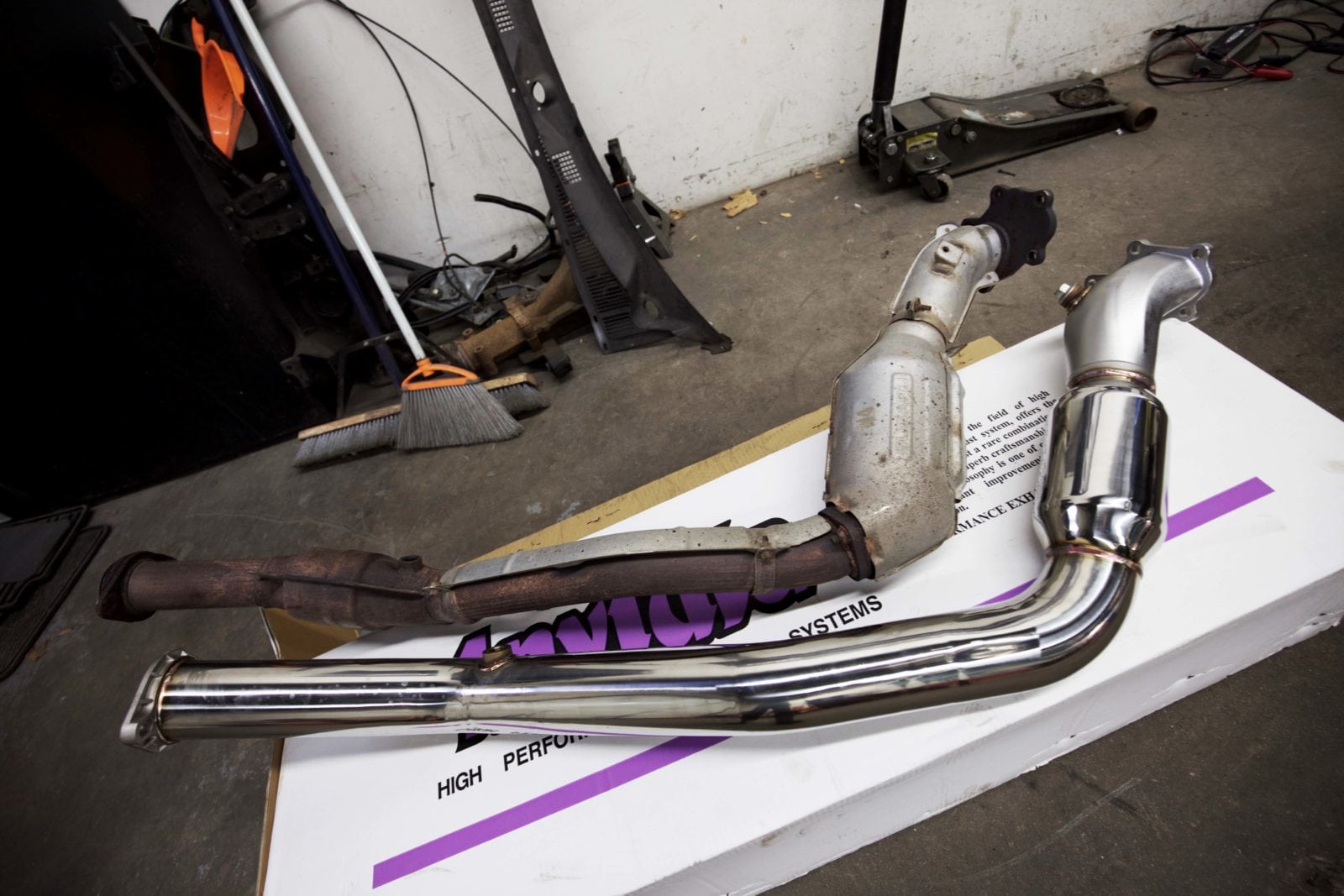
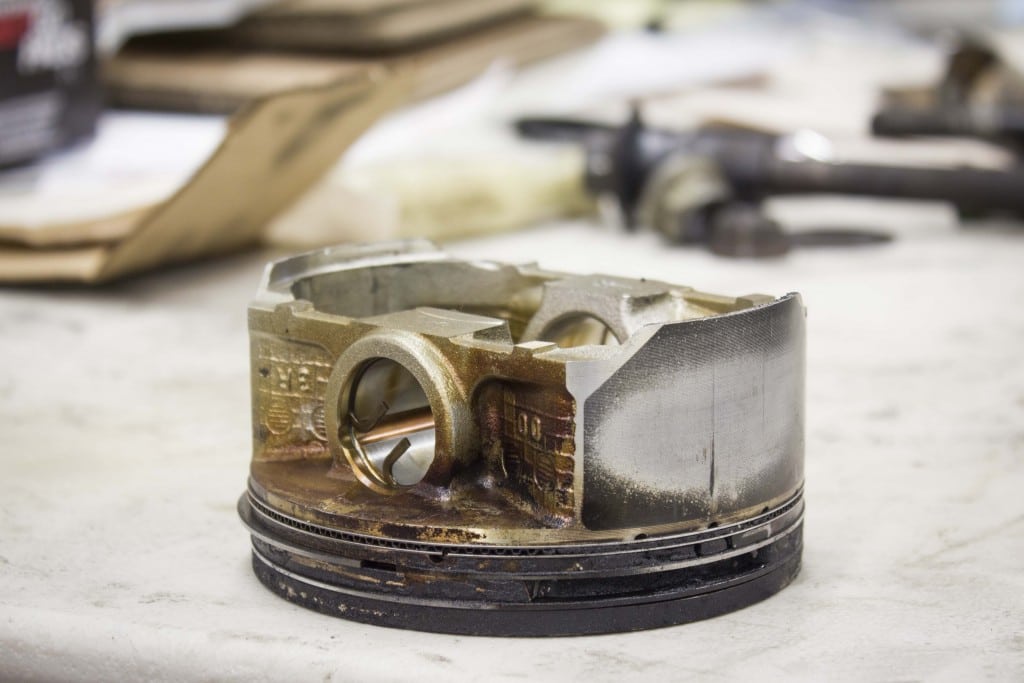
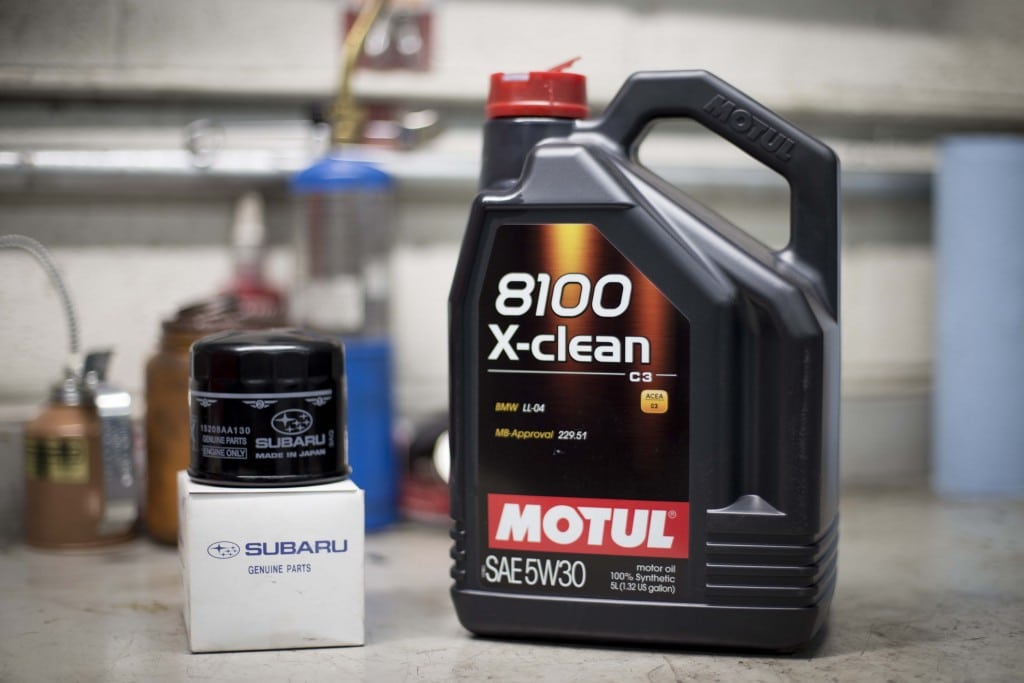
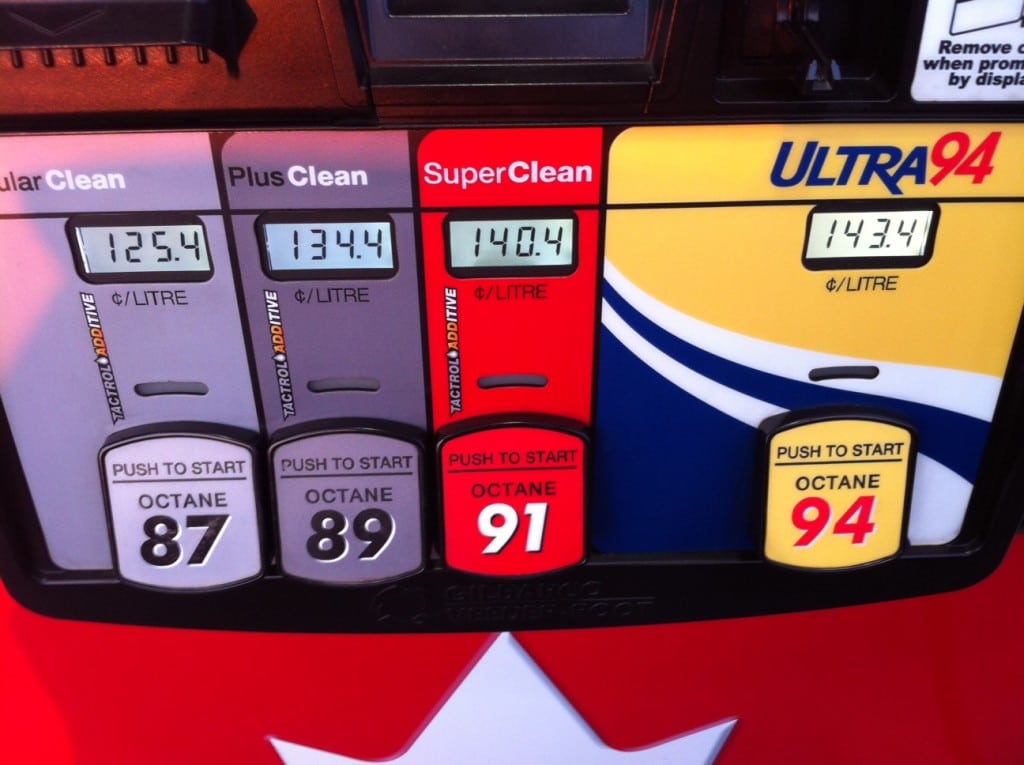
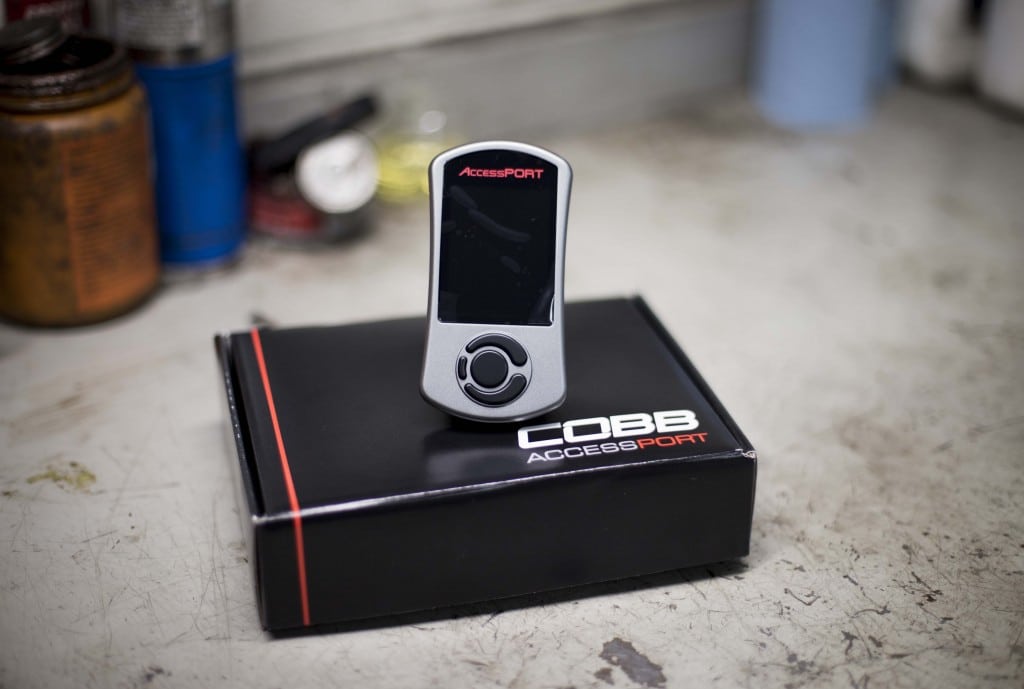
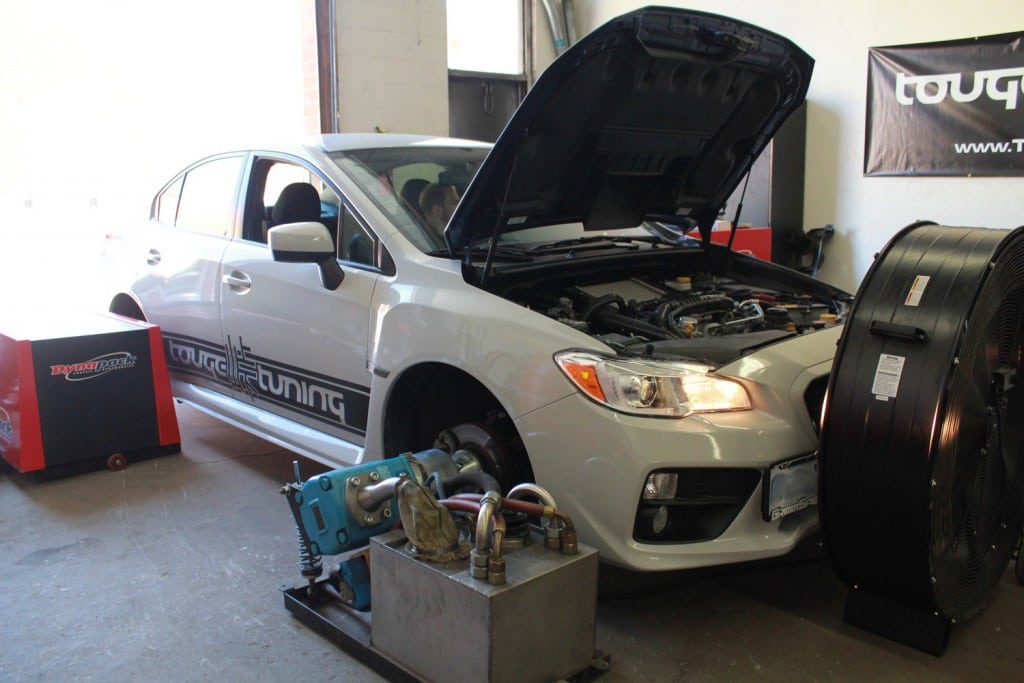
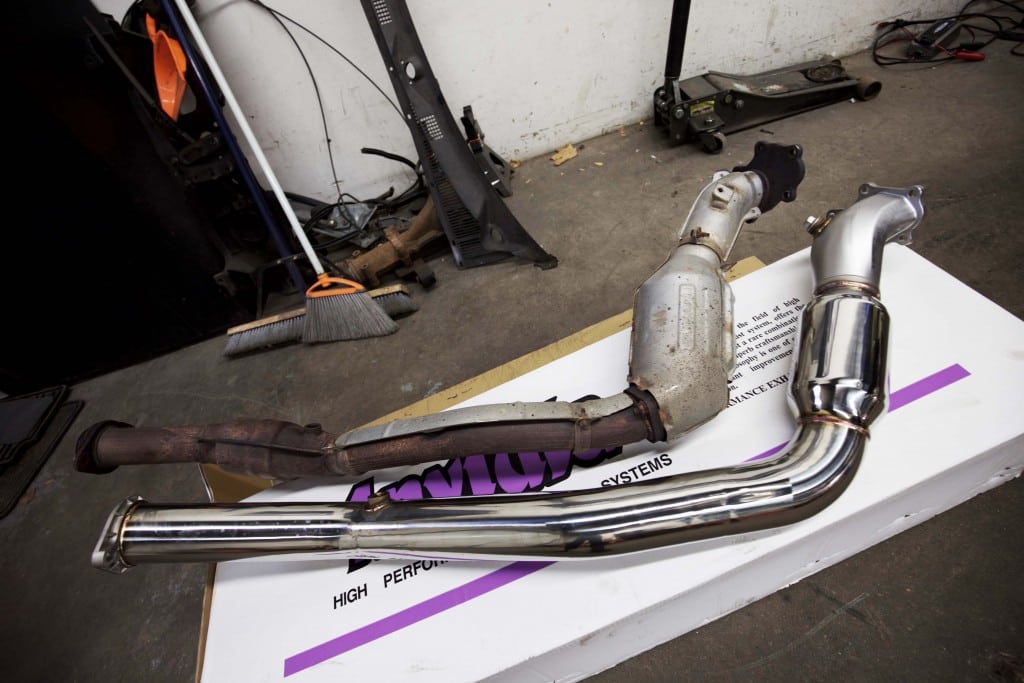
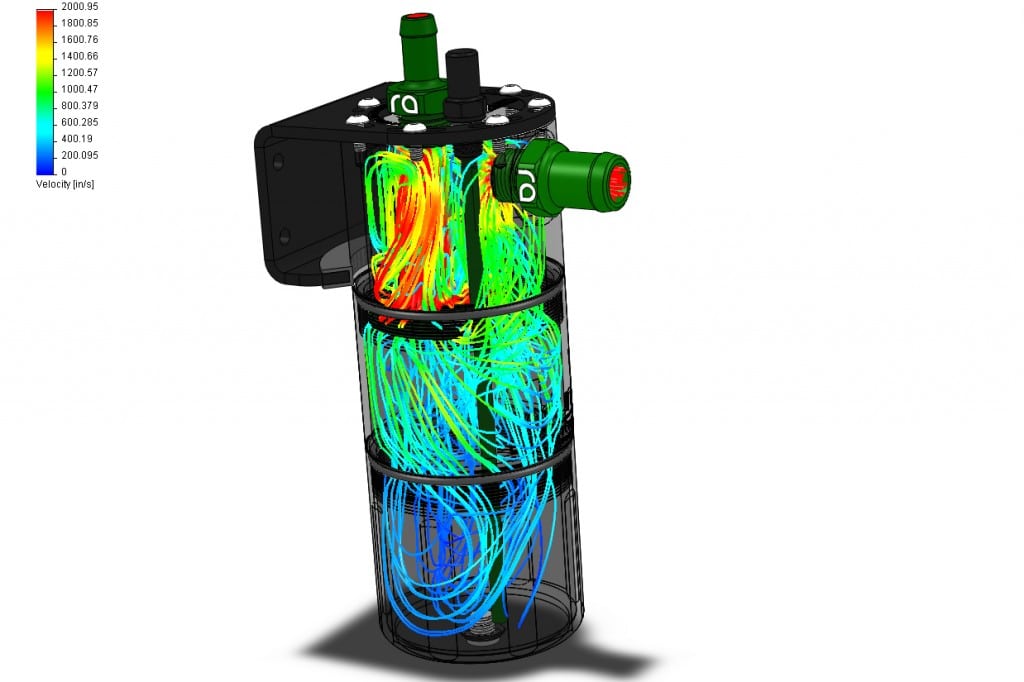
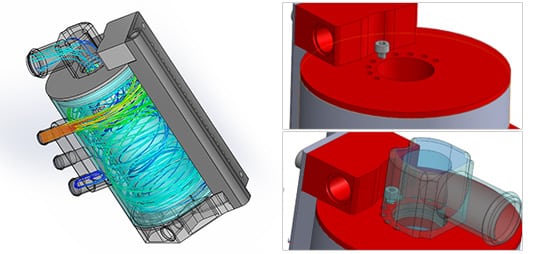
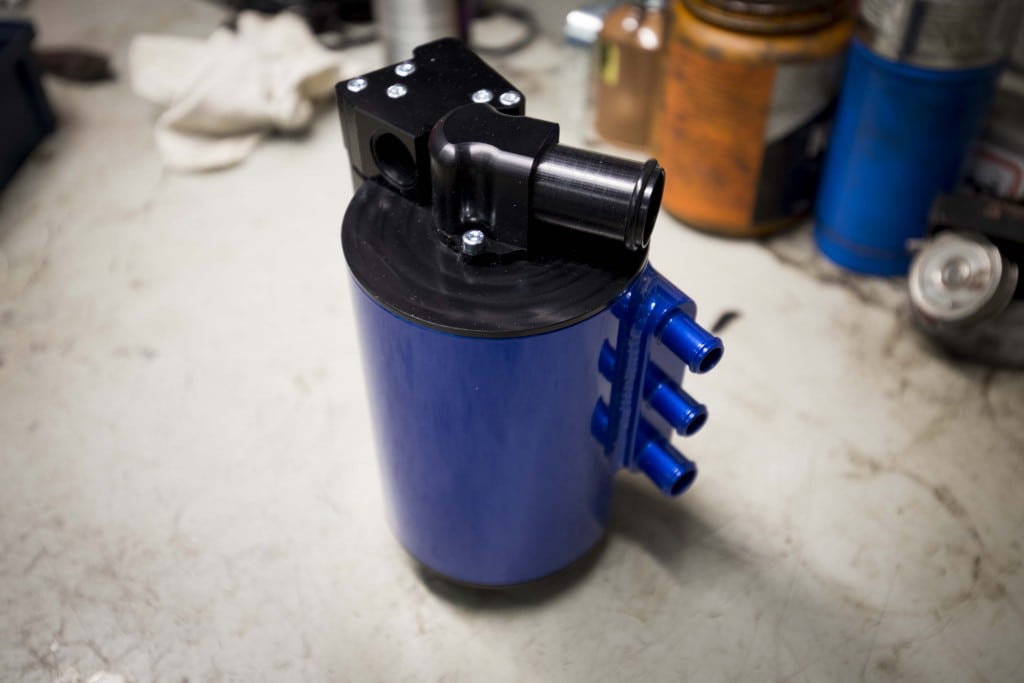
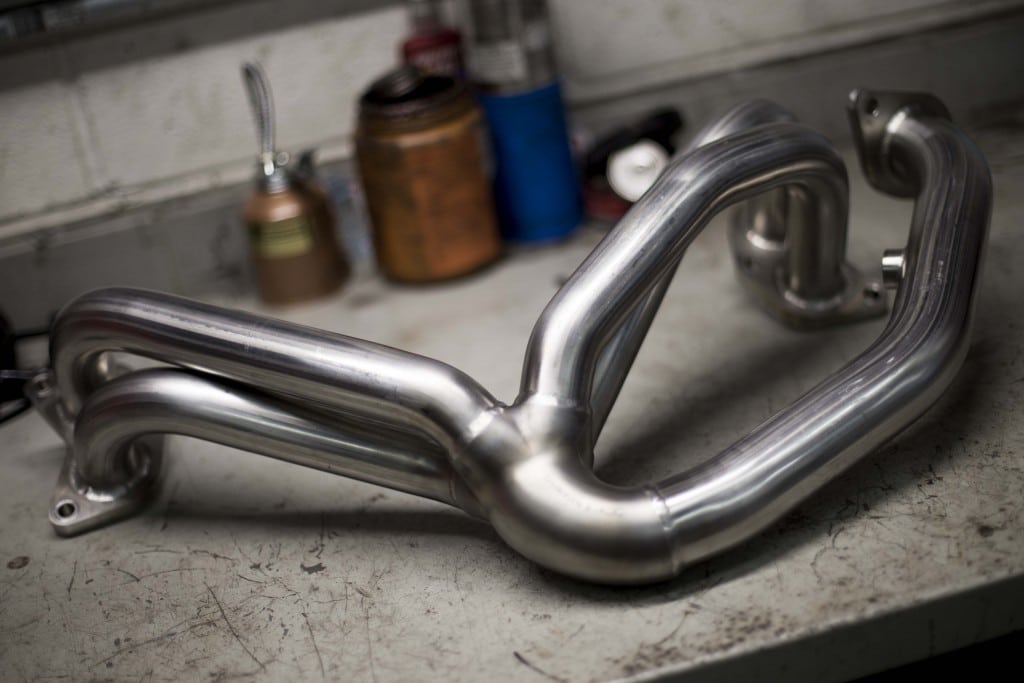

Kevih
??? I have read many different articles and forum posts regarding ringleader failures. Many times it gets very skewed. Great write up!
– Kevin
Chris@TougeTuning
Thanks for the comment Kevin, glad you enjoyed it!
Patrick
Very interesting information. I was was already aware of that issue but thanks for clearing up the possible causes. How do you find the grimmspeed AOS compares to all the other completely different units? It seems to be the only one in its kind. I have one on my stock wrx, just wondering.
Chris@TougeTuning
The Grimmspeed AOS is good for up to Stage 2 power levels and then I don’t believe it’s the right solution for beyond that. For your stock WRX it’s definitely better then having nothing.
Rory
Would it be good for turbo back and intake, and turbo inlet pipe?
Ricardo Alves
Now that was by FAR the best write up that I have read on ring land failures. Great job Chris, this had me interested the whole way. Glad to have you working on my car.
Chris@TougeTuning
Thanks Ricardo, I put a lot of thought and time into trying to make it informative and easy to understand.
333COBALT
So I found this article by watchin the youTube video on Ricardo’s car I plan to buy the same (used) car in my town. I was wondering what is the price tag on Ricardo’s safety modifications.
Chris Richardson
It would be best to contact us directly for an estimate on the mods he has done or check out our website.
Michael Breecher
Thanks Chris for a well written article. You turned a subject that can be complex and made it easy to understand. Mission accomplished!
Ryan
Very nice article, Chris. Really helped me have a much better understanding of something that seems to sit over the head of a lot of Subaru owners. Keep these great articles coming!
Chris Z
This write-up is great because it takes a very constructive approach to the issue of “Ringland Failures”. Instead of ranting about all of the flaws with turbocharged flat 4 engines found in Subarus (which other articles on the internet tend to do) this article actually offers you a solution and tries to guide your decisions with your car.
Jon
Very informative article, thanks for writing. I’ve read that AOS units can form a sort of white residue inside of them when being used in colder temperatures. Is that something you’ve come across? I’d be worried about that stuff getting into the crankcase.
Chris@TougeTuning
Thanks for reading Jon. With a heated AOS the chance of this happening is very slim. This also mainly would be a concern if you do short drives without allowing the engine to get up to temperature.
Jon
Catch cans for me then! Thanks.
Ken
How many hours drive there from winnipeg manitoba?
Chris@TougeTuning
Only 20 hours
oso
Great article, very helpful, but really this should be mandatory for any car, not just boxer engines. And even more so for modified vehicles.
Arjun
Thank you for a great write up. What are your thoughts on VTA catch cans to remove excess crank pressure.?
Chris@TougeTuning
VTA AOS/Catch Cans are good if necessary based on the amount of crankcase pressure you’re seeing. I would say VTA is ideal for cars making around and above 400WHP.
Curtis
You sound like the dealership…….23000km on a 2011 sti before the ring lands failed. No warranty of coarse and they fed us the same things you’re saying . Ok I understand you’re trying to help and you’re not wrong here but… So all we did is put a set of JE Pistons in it with out doing anything else, car remaining stock besides the pistons…guess what? Beat it the same way we did before and the ring lands take it. So don’t buy the extended warranty EVER! Just take that money and buy some good pistons.
Chris@TougeTuning
Thanks for the comment Curtis. While the pistons can be considered weak, they are not really the root cause of the issue. Replacing the pistons with forged pistons that can take more knock/detonation will help, if you have a lot of blow-by and a poor tune then eventually even those pistons will go it just will take longer to happen. Increased blow-by is inherent with forged pistons so it is strongly recommended to have an AOS to handle this after doing forged pistons.
Jesse
Could you elaborate more on why it’s bad to go 100% throttle at low RPMs? Why would it be any harder on the engine than full throttle at a higher RPM? You’re still putting the same load on it, pushing the car to accelerate as fast as possible. Shouldn’t this be something a proper tune is taking care of anyways, to maintain proper AFR and prevent detention at any throttle position at any RPM?
Thanks, I agree with your other points, this one just didn’t seem to make sense with me as a reason to cause ringland failure.
Chris@TougeTuning
Jesse, thanks for taking the time to read and respond. This is about the best way to explain it;
Well it’s like trying to ride a bicycle in a gear that is way too hard, you don’t have any mechanical leverage so you need a LOT of torque to get moving.
The engine speed is low, so the engine is knock prone due to the long period of time from when the ignition lights the spark until the cylinder starts going down the bore. The high load and slow engine speed combine to create a potentially dangerous situation.
Chris
Thanks for the write up Chris!
Me and my friend just got a STI recently and looks like you/your shop would be a good place to do any future mod. Where can we find you when needed? 🙂
Chris@TougeTuning
Thanks for the comment Chris, you can email sales or service @tougetuning.com or stop by the shop any time.
Jake
Just to elaborate on the stock DP situation I’m never planning on tracking my car. 09(sti) I have a cat back (tomei expreme ti) and a AOS that’s it for mods. I drive my car very nicely. Sometimes small WOT. Do you think it’s necessary to upgrade my DP and get a tune and so on. I do everything else in the article religiously. Other then having stock headers. Thanks guys and great write up. Also as a side note do you think that a oil pick up upgrade is a necessity (killer b). do the stock ones not fail as much on the newer cars
Chris@TougeTuning
Jake, if you’re not driving the car very hard then I wouldn’t be too worried about the downpipe. We still see the odd pick-up failure on the new cars, it is a preventative maintenance part I would recommend doing.
Frank Leal
One of the best write up on the ringland failure I have read. Great “pen to paper” Chris.
Brooks
Awesome article and very well written, I’m currently having a new engine installed in my 03 WRX due to a ring failure, I got the car with 113,xxx miles on it and it failed within 2,000 miles. Almost positive due to maintenance failure by previous owners. Thanks for the great info Chris to orevent this in the future.
Brooks
Correction I have a spun rod bearing
John Seehorn
I have noticed on Subaru EJ22 engines with cylinder head temp sensors that cylinders #2 & #4 seem to run hotter than the #1 & #3. These engines did not have symmetrical exhaust lengths.
Andy S
Very nice info piece, Chris. I wish I read this when I first got the STi 4 years ago…
Brady
Thanks for the info man!! I have been struggling with a misfire in cylinder #1 & #3 and now believe the potential for ringland failure is right around the corner. I have done almost everything to cure the symptoms but now after reading your article I see 2 more possibilities to help fix this. Thanks again!!
Ryan E.
Thank you for writing this article, Chris. You did a fantastic job of explaining some problematic areas.
A point I wish had been brought up are the stock series fuel lines. Since they’re ran in series, this can cause a lean spot in the cylinder receiving fuel last which can potentially lead to a ringland failure.
Angel
Thanks so much for the info i have a 2016 STI Hyper Blue all stock i haven’t done anything but I will very soon
Gruvin
I am about to purchase an sti 2016 model. First time driving turbo and subaru! Would it be safe to upgrade exhaust to a cat back system without requiring a tune ?
Chris@TougeTuning
Congrats on the new car purchase! Adding a cat-back will not effect the tuning and is a safe upgrade if you just want the boxer rumble with no performance difference.
George Chakar
Thank you the extensive explanation of ring land failure. Way more than I got from Subaru after they had my car in the shop for a month! I have 2015 Stock WRX that experienced ring land failure at 22,000 miles. The dealership replaced the small block under warranty. I have asked Subaru of America for a new car or an extended warranty and both requests were denied. I have the vehicle back, but I have now contacted a lemon law attorney. No new vehicle should ever need a new engine regardless of the cause. My factory car is producing 22 PSI of peak boost. Which I believe is the cause. At any rate, I am done with this car. Subaru needs to beef up the pistons and call it a day!
Paul Gillie
George,
Did you have any symptoms prior to this failure? Did you notice the problem right away or had it possibly been a problem for a few thousand miles? I have a 2017 wrx with 11,000 miles already. I installed a cobb tune as soon as it was available because of the problems I was having (extreme boost spikes, severe audible knock even at highway speeds). I cringe to think that something may be damaged but as of now there are no symptoms of damage. This is SO frustrating. I bought a new car specifically because I don’t have the time right now to think about or deal with these issues. By the way there have been zero issues since installing the accessport.
Mike
Chris,great article and I can use your opinion on something. I have a 2015 Wrx and all I have done so far is a Cobb Access Port stage 1 map 91oct. Is it safe to add an Invidia q300 quad tip catback exhaust without changing any stock parts.
Chris@TougeTuning
Thanks Mike, you can definitely add the cat-back without changing any other parts or tuning.
Kevin
I think you might have the concept of fuel dilution backwards. Fuel dilution is the dilution OF the oil BY fuel. Blow-by is fuel/air mixture getting past the rings into the crankcase. If excess oil is getting up into the cylinders past the oil control rings, it should just get burnt off, right? Subaru battled this issue for a few years too. Or absolute worst case; it’d deposit carbon in the chamber that may lead to pre-ignition under high load (which is not the same as detonation).
Even under your assumption that oil vapour is entering the cylinders, it doesn’t make sense to me that it would decrease knock resistance because an octane rating is essentially a ratio of octane to heptane mix. 94 octane + oil vapour doesn’t increase the amount of heptane so I have doubts that it’d have an appreciable impact on the overall octane rating.
Can you clarify?
Chris@TougeTuning
The oil vapour is not going past the rings Kevin, it is venting out of the crankcase and valve covers into the turbo inlet, through the turbo/intercooler and then through the throttle body. This is where the dilution of the fuel occurs in what we are referencing.
Kevin
Chris, thanks for replying but you didn’t address my concern.
There’s no confusion about the path of oil vapours. No vapours can get backwards from the crankcase to the cylinders past the piston rings; I understand the oil vapours you mention are being recirculated to the intake manifold through a vent like the PCV.
However, again, under your assumption that oil vapours are being mixed with the intake charge, those vapours are 90+% air (whose mass flow was arguably measured by the MAF). How is this “diluting” the already atomized fuel? By adding atomized oil? That doesn’t change the chemical composition of the fuel; it’s still the same ratio of octane to heptane being combusted. Are you confusing AFR with octane rating? Because that’s the only way I can rationalize your explanation, especially as it relates to combustion temperatures.
Chris@TougeTuning
Kevin the information was simplified so that the majority of people would benefit from the article. The oil in the intake system is going to ignite sooner and uncontrolled when compared to the fuel. This is what will cause detonation or knock. It’s been proven many times over that removing oil from the intake system will allow you to make more power safely on the same fuel.
Jordan
Was going to google some more info about this and then bam this pops up. Great write up. I’m running total quartz 9000 in my 2015 wrx, I have heard this isn’t warranty approved oil though.
jason
Awesome article and very helpful indeed. I have a 2017 and I am nearing my first oil but have been reading on the forums to not use the standard Subaru oil. Most were recommending to go with a nicer full synthetic 5w30 or even a 5w-40. My car is used mostly as a daily driver with trips that are about 15-20 minutes. Since the car is stock, other than a catback, what oil would be best for my appilcation? I also live in California and we don’t really have much of a winter with lowest temps being around the low 40s.
John S
Very good article, was actually researching ringland failure on my 2011 Chevy Cruze 1.4 Turbo but the end result for me is the same. These engines have been squeezed for weight loss, leaving piston skirts short, engine temps higher then 190 degrees and oil extended to be green. All of this is probably boarder line abusive to a engine. You don’t have to drive a engine all that hard to find out how brittle it can become. Especially with lack of maintenance or even just slight deviations in normal operation. Unfortunately precision engines come at a price, more attention to details.
Jason
Hi Chris,
Really found your write up informative, I’m only 45 minutes from your shop so I might have to come in. I have a 2017 WRX, which is my first turbo car. I really want to calibrate the ECU with an Accessport to improve the way the car drives. I hate how the stock tune feels as most say its very jerky at times and can be hard to drive. Of course the dealer made it clear any flashing of the ECU voids warranty. I don’t care though anymore because the factory tune is so horrible I can’t stand it. I decided to pick up an Accessport and just do it. If I do flash the ECU the dealer can tell right, even if I go back to stock? I don’t want to go crazy with mods just the Cobb Accessport and Cobb CIA for now and maybe exhaust later. Is there any reason for me to be concerned about hurting my engine by flashing it with an OTS Cobb tune? I’m not a track racer, just an older guy who likes to take his car out occasionally and maybe do some spirited driving here and there. I do baby it for the most part and totally keep up on regular oil changes.
Chris Richardson
Thanks for checking out our article Jason. I would not be concerned with flashing the OTS COBB Map, you’ll get improved performance, fuel economy and the car will drive better overall.
craig
Hi Chris. I have recently bought a 2015 wrx sti which has been modified to the stage 2 category. I can tell the previous owner had some sort of programmer on it, but it didn’t come with the car. The car is having a lot of misfire issues. Would buying a stage 2 cobb accessport resolve these issues, or is there a chance my situation is worse? Would appreciate any feedback. Thanks.
Chris Richardson
Typically a consistent/persistent misfire on 1 cylinder may be a ringland failure. However, if you’re unsure of the tuning state of the vehicle getting an AccessPORT would be highly suggested.
Andrew C Jefferies
Chris,
Recently popping up in many performance communities is a “cooling mod” that adds additional coolant flow into the driver’s side head and specifically around cylinder 4. The claim is that there is poor cooling around both cylinders 2 and 4 and especially to #4 and this is the primary reason for cylinder 4 failure. In your professional opinion how much legitimacy could there be to this?
Chris Richardson
While it does help I don’t believe the effects are as drastic as claimed.
Mujahid
Very informative, thank you.
Chris Richardson
You’re welcome, thanks for reading!
Troy
Hi Chris thanks for writing very informative.
I would like to ask I just brought a MY19 Wrxsti spec R and would like to install a Invidia R400 cat back exhaust just for sound is this safe for the car? Or will the exhaust harm my engine?
Thanks in advance all the way from Sydney Australia.
ChrisTouge
You should have no issues with adding the Cat-Back to the car as it should have no effect on the engine operation since it is after all of the main restrictions and after all of the engine sensors.
Ahmad
Will a Invidia R400 cat back on a stock 2018 sti spec R cause this ringland problem? Of will it be safe?
ChrisTouge
The cat-back will not have any effect on the engine performance or cause a failure.
Mike
Hi Chris, great write up. Could really use your advice, I’m dangerously close to purchasing an 08 sti from my local dealer. The car has never been modded and the Rep stated it suffered engine failure due to a faulty part. It has 115, 000 km on it and The short block has literally just been replaced by the dealership and is now for sale on the lot. Is there anything I should be concerned about or anything to watch out for. ? I was “all in” on this car until I started digging through the forums and seeing some of the trending problems of these boxer engines. I live in Saskatchewan.
Any tips or advice would be greatly appreciated.
ChrisTouge
Mike, thanks for checking out my article and hope it was helpful with your car hunting. The questions I would be asking would be; Was the short block replaced complete or was just the faulty part replaced? A lot of times if a ringland fails the dealer will replace the bad piston and send it on its way. If it wasn’t a ringland failure I would find out what failed and what components were also replaced because if a corner was cut you could be walking into a situation where the motor fails shortly after purchase. I would also request a compression test be done as well as do an oil change and inspect for any metal in the oil.
Stephen Mulder
Great article! I literally JUST brought home a 2013 WRX STI and didn’t know about this issue until after I got home and started reading up on it….now I’m sick to my stomach…I suppose it’s partly my fault for getting the car “blind” lol ..oops
Anyhow it’s got a stock tune and stock parts…doesn’t mean it was always like that I’ll have to book an appt. to swing by and get it tuned properly, physically speaking the car looks like it was babied it’s whole life
Thankful I’m a stones throw from you guys and love the information thanks Chris!
John
I recently got my 2015 sti and was looking to do some mods. What do you recommend I do first? Is changing the exhaust a good move? If so, what exhaust do you recommend?
ChrisTouge
The first mods would be the AccessPORT, Downpipe and an AOS in my opinion.
Matthew
I have had a ring land failure on my IAG stage 1 block that was just installed last year. It had 30000 Km on it and well i did load it hard in 6th gear as said above so that might of been the cause. I have a catch can and dynamic 1050X injectors with a G20 cobb turbo, i have a turbo back invidia exhaust and upgraded radium fuel pump but stock fuel rails. Now before the engine had a ring failure in cylinder 4 and a crack in cylinder 2 , I had a AVCS problem on my exhaust system for the drivers side. My question is if the AVCS soleniod was failing would it cause the ring land failures on that side ? My tuner did send me a map to turn the AVCS exhaust off till i could get in to the shop to have it fixed but the day i went in we found the ring failures
ChrisTouge
It sounds like the car mechanically was not in good shape which would definitely be a major factor in the cause of your engine failure.